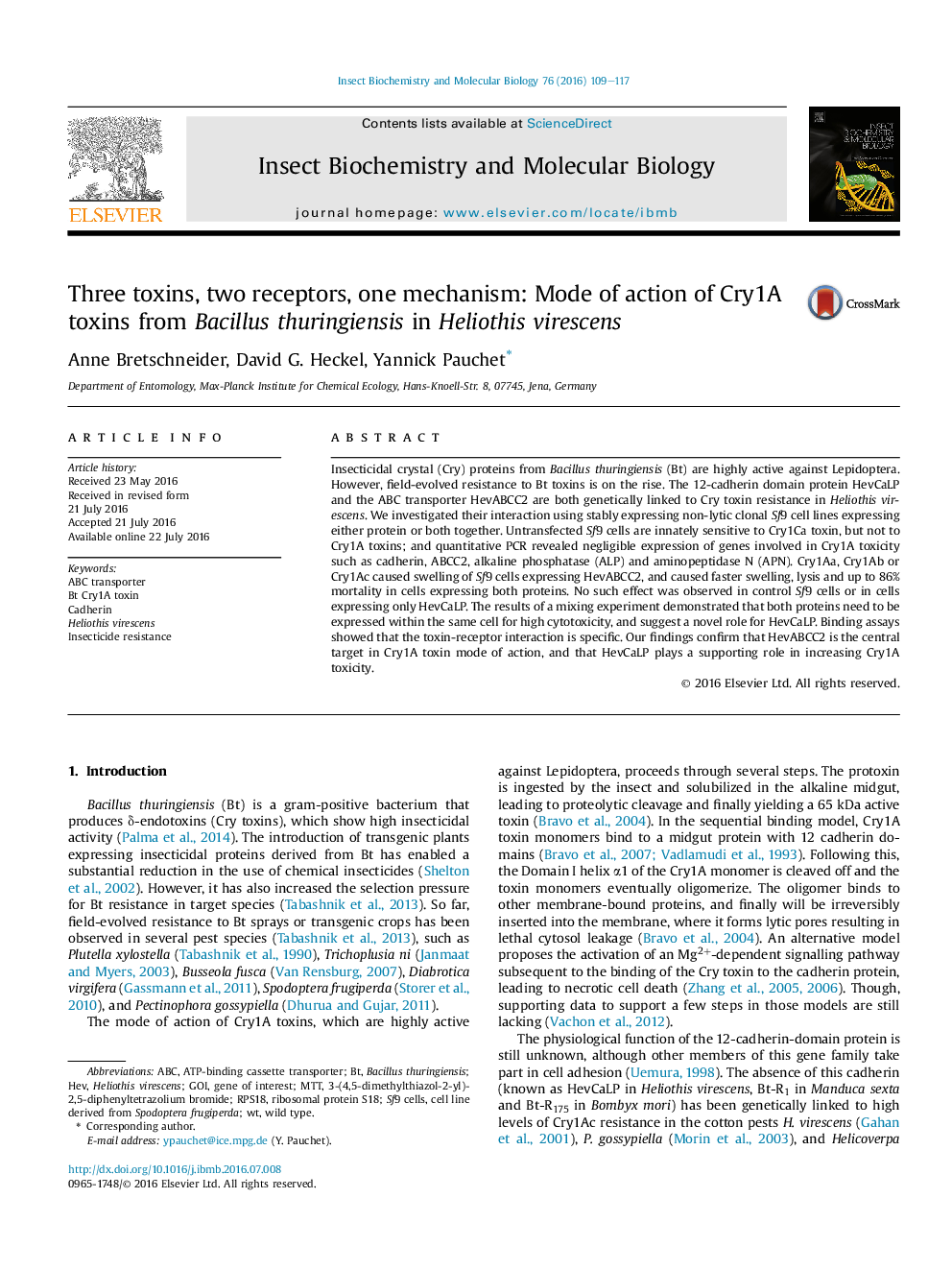| Article ID | Journal | Published Year | Pages | File Type |
|---|---|---|---|---|
| 1981956 | Insect Biochemistry and Molecular Biology | 2016 | 9 Pages |
•The role of HevABCC2 was investigated for the Cry1A mode of action in Heliothis virescens.•Stable heterologous expression of HevABCC2 and HevCaLP in Sf9 insect cells.•HevABCC2 is essential for pore formation.•HevCaLP plays a supporting role by increasing Cry1A toxicity.
Insecticidal crystal (Cry) proteins from Bacillus thuringiensis (Bt) are highly active against Lepidoptera. However, field-evolved resistance to Bt toxins is on the rise. The 12-cadherin domain protein HevCaLP and the ABC transporter HevABCC2 are both genetically linked to Cry toxin resistance in Heliothis virescens. We investigated their interaction using stably expressing non-lytic clonal Sf9 cell lines expressing either protein or both together. Untransfected Sf9 cells are innately sensitive to Cry1Ca toxin, but not to Cry1A toxins; and quantitative PCR revealed negligible expression of genes involved in Cry1A toxicity such as cadherin, ABCC2, alkaline phosphatase (ALP) and aminopeptidase N (APN). Cry1Aa, Cry1Ab or Cry1Ac caused swelling of Sf9 cells expressing HevABCC2, and caused faster swelling, lysis and up to 86% mortality in cells expressing both proteins. No such effect was observed in control Sf9 cells or in cells expressing only HevCaLP. The results of a mixing experiment demonstrated that both proteins need to be expressed within the same cell for high cytotoxicity, and suggest a novel role for HevCaLP. Binding assays showed that the toxin-receptor interaction is specific. Our findings confirm that HevABCC2 is the central target in Cry1A toxin mode of action, and that HevCaLP plays a supporting role in increasing Cry1A toxicity.
Graphical abstractFigure optionsDownload full-size imageDownload high-quality image (304 K)Download as PowerPoint slide
